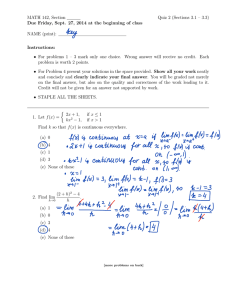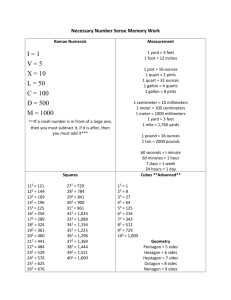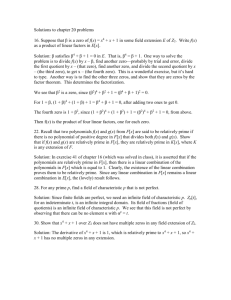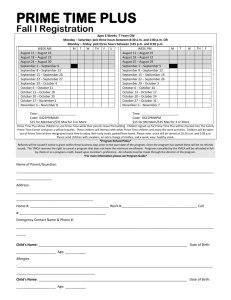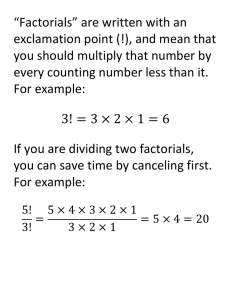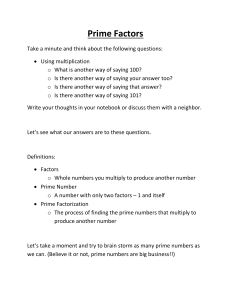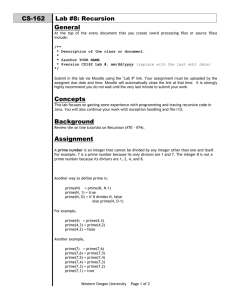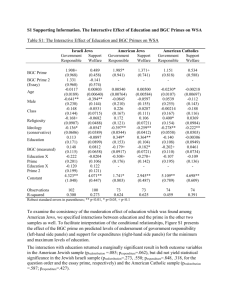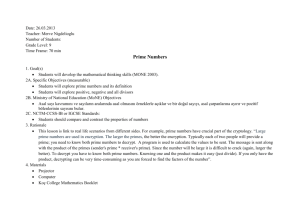The √ symbol means radical (or square root) (a) x2 _ 2x
advertisement
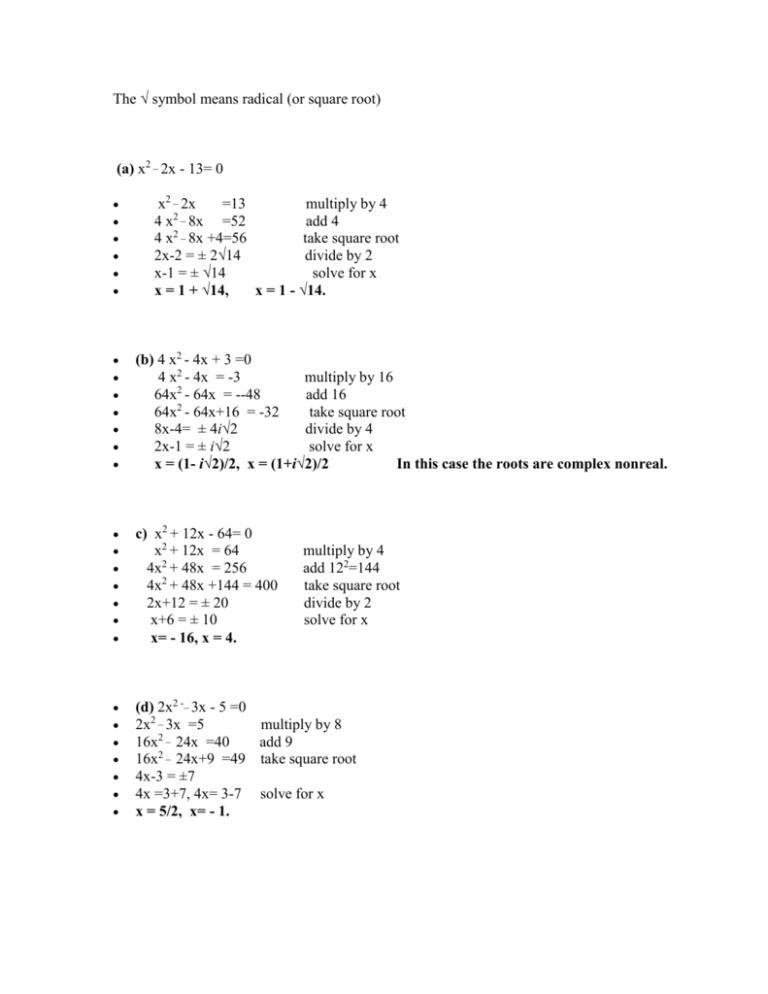
The √ symbol means radical (or square root) (a) x2 _ 2x - 13= 0 x2 _ 2x =13 multiply by 4 2_ 4 x 8x =52 add 4 4 x2 _ 8x +4=56 take square root 2x-2 = ± 2√14 divide by 2 x-1 = ± √14 solve for x x = 1 + √14, x = 1 - √14. (b) 4 x2 - 4x + 3 =0 4 x2 - 4x = -3 multiply by 16 64x2 - 64x = --48 add 16 2 64x - 64x+16 = -32 take square root 8x-4= ± 4i√2 divide by 4 2x-1 = ± i√2 solve for x x = (1- i√2)/2, x = (1+i√2)/2 In this case the roots are complex nonreal. c) x2 + 12x - 64= 0 x2 + 12x = 64 4x2 + 48x = 256 4x2 + 48x +144 = 400 2x+12 = ± 20 x+6 = ± 10 x= - 16, x = 4. (d) 2x2 -_ 3x - 5 =0 2x2 _ 3x =5 16x2 _ 24x =40 16x2 _ 24x+9 =49 4x-3 = ±7 4x =3+7, 4x= 3-7 x = 5/2, x= - 1. multiply by 4 add 122=144 take square root divide by 2 solve for x multiply by 8 add 9 take square root solve for x 2. Mathematicians have been searching for a formula that yields prime numbers. One such formula was x2 _ x + 41. Select some numbers for x, substitute them in the formula, and see if the prime numbers occur. Try to find a number for x that when substituted in the formula yields a composite number. x 0 1 2 3 4 5 6 7 8 9 10 11 12 13 14 15 16 17 18 19 20 21 22 23 x2+x+41 41 43 47 53 61 71 83 97 113 131 151 173 197 223 251 281 313 347 383 421 461 503 547 593 Prime? Yes Yes Yes Yes Yes Yes Yes Yes Yes Yes Yes Yes Yes Yes Yes Yes Yes Yes Yes Yes Yes Yes Yes Yes The first 24 integer values of x give prime values of x2+x+41 as it can be seen from the table. However it can be seen that this is not always the case. For instance, write x2+x+41=x (x+1)+41. If one chooses x such that either x or (x+1) is a multiple of 41 then x2+x+41 is not a prime number anymore. For instance when x=40 we have x2+x+41=412, not a prime number anymore. Similarly, when x=41 we have x2+x+41=41*43 not a prime number anymore. Other values of x for which x2+x+41is not prime are x= 81, 82, 122, 123, ….etc.
